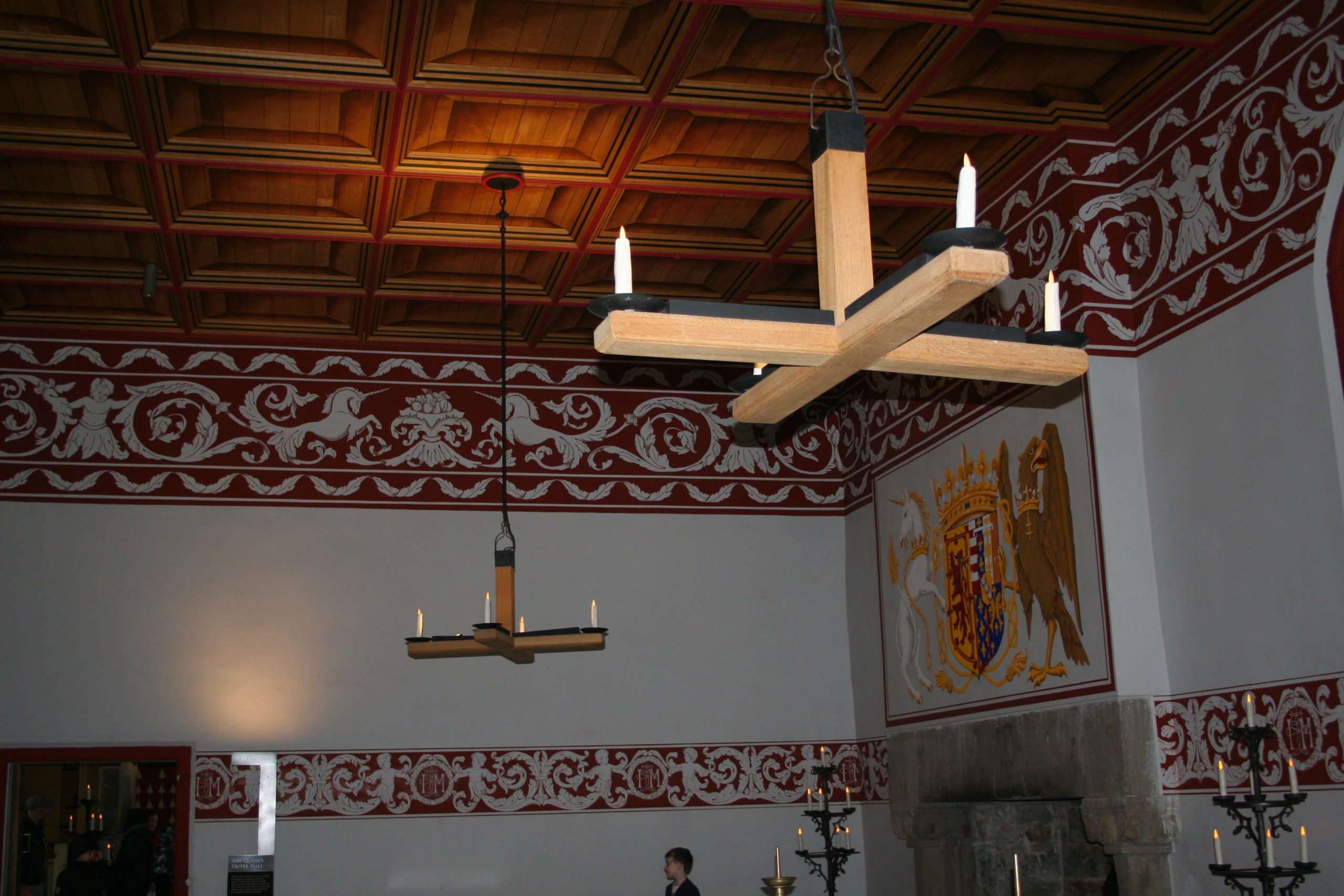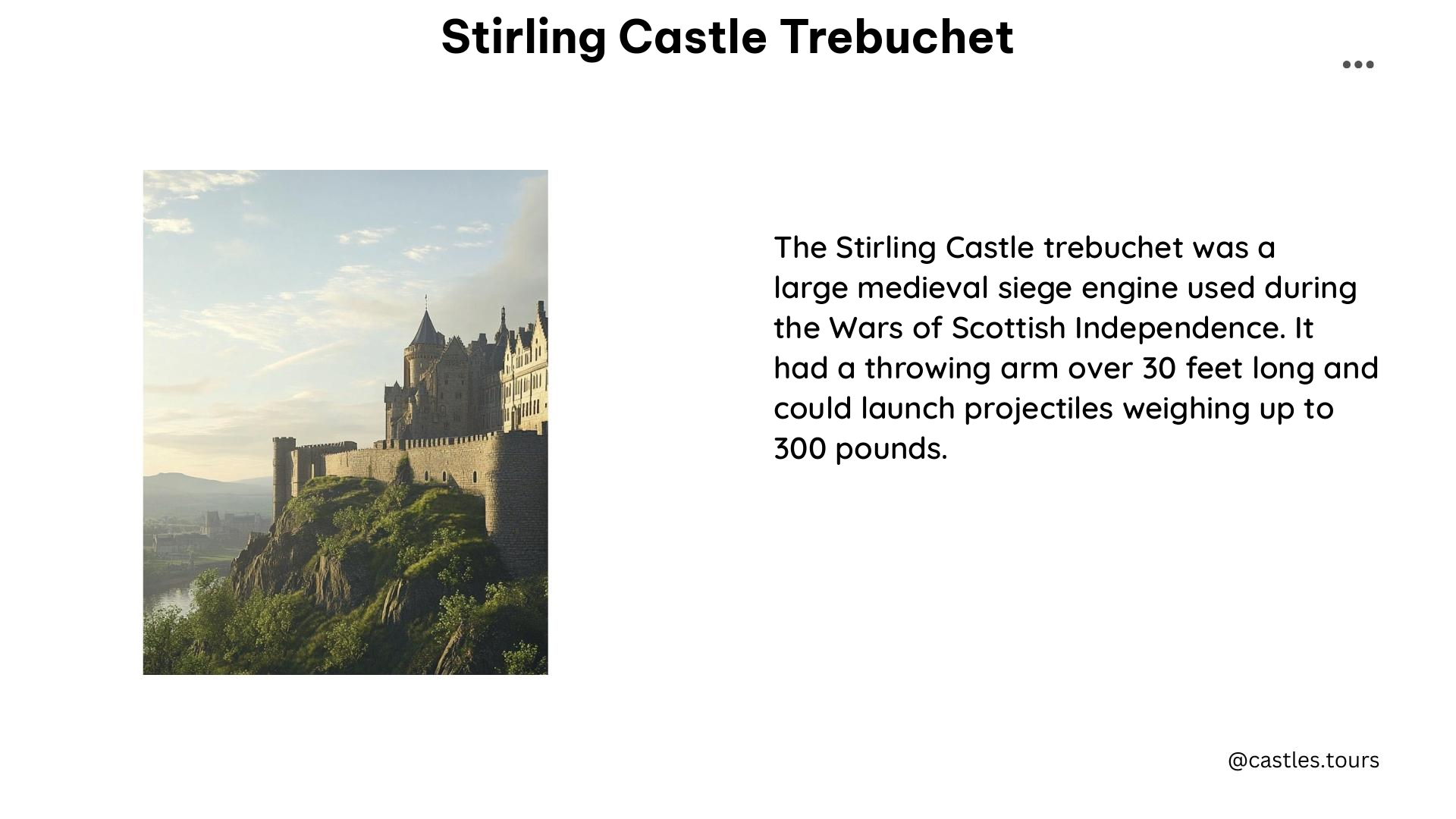The Warwolf, also known as the Loup-de-Guerre or Ludgar, was the largest trebuchet ever constructed, designed to break the siege of Stirling Castle during the Wars of Scottish Independence. Standing at an impressive 90 meters (295 feet) in height with its arm fully extended, this colossal siege engine was capable of launching projectiles weighing up to 120 kilograms (264 pounds) over a distance of approximately 200 meters (656 feet).
The Specifications of the Warwolf Trebuchet

| Specification | Details |
|---|---|
| Name | Warwolf (also known as Loup-de-Guerre or Ludgar) |
| Height | 90 meters (295 feet) with its arm fully extended |
| Projectile Weight | Up to 120 kilograms (264 pounds) |
| Range | Approximately 200 meters (656 feet) |
| Construction Time | Three months |
| Workforce | Five master carpenters and 49 other laborers |
| Transportation | Required 30 wagons to transport its disassembled parts |
| Purpose | To break the siege of Stirling Castle, the last remaining stronghold of Scottish resistance to English rule |
The Historical Context and Impact of the Warwolf Trebuchet

The Warwolf was built during the Wars of Scottish Independence, specifically for the siege of Stirling Castle in 1304. The siege lasted from April to July of that year, and the presence of the Warwolf ultimately led to the surrender of the castle’s garrison. The successful use of this massive trebuchet demonstrated the power and control of the English over Scotland.
Interesting Facts about the Warwolf Trebuchet
- The Warwolf was designed by James of Saint George, a military engineer who also designed Edward I’s castles in Wales.
- The trebuchet was so massive that it required a workforce of over 50 skilled carpenters to assemble it.
- The siege of Stirling Castle involved a total of 15 siege engines, but the Warwolf was the most significant and intimidating one.
- The Warwolf was never seen again after the siege, likely due to the death of Edward I three years later and the lack of enthusiasm for conquests by his son, Edward II.
The Construction and Transportation of the Warwolf Trebuchet
The construction of the Warwolf trebuchet was a monumental undertaking, requiring the expertise of five master carpenters and 49 other laborers. It took three months to complete the assembly of this colossal siege engine.
Once constructed, the Warwolf had to be disassembled and transported to Stirling Castle. This process required the use of 30 wagons to carry the various components of the trebuchet. The sheer size and weight of the Warwolf made its transportation a logistical challenge, but the English were determined to bring this formidable weapon to bear against the Scottish stronghold.
The Siege of Stirling Castle and the Warwolf’s Decisive Role
The siege of Stirling Castle in 1304 was a crucial moment in the Wars of Scottish Independence. The castle was the last remaining stronghold of Scottish resistance to English rule, and Edward I was determined to break its defenses.
The siege involved a total of 15 siege engines, but the Warwolf was the most significant and intimidating of them all. Its sheer size and power were intended to demoralize the Scottish defenders and force their surrender.
As the siege progressed, the Warwolf’s devastating projectiles began to take their toll on the castle’s walls and structures. The Scottish garrison, led by Sir William Oliphant, held out for several months, but the relentless bombardment from the Warwolf eventually led to their capitulation.
The surrender of Stirling Castle marked a significant victory for the English and demonstrated the power of the Warwolf trebuchet. This massive siege engine had proven its worth, and its legacy would live on as a symbol of English might and control over Scotland.
Conclusion
The Warwolf trebuchet, with its impressive size, power, and historical significance, stands as a testament to the ingenuity and engineering prowess of the medieval era. Its role in the siege of Stirling Castle was a pivotal moment in the Wars of Scottish Independence, showcasing the English’s determination to subjugate the Scottish people and their last remaining stronghold of resistance.
The Warwolf’s legacy continues to captivate historians, engineers, and castle enthusiasts alike, serving as a reminder of the formidable weapons that were once used to shape the course of history.
References
- https://en.wikipedia.org/wiki/Warwolf
- https://www.guinnessworldrecords.com/world-records/723197-largest-wooden-trebuchet
- https://sctbdm.com/warwolf-trebuchet/
- https://blog.historicenvironment.scot/2024/04/the-war-wolf-at-stirling-castle/
